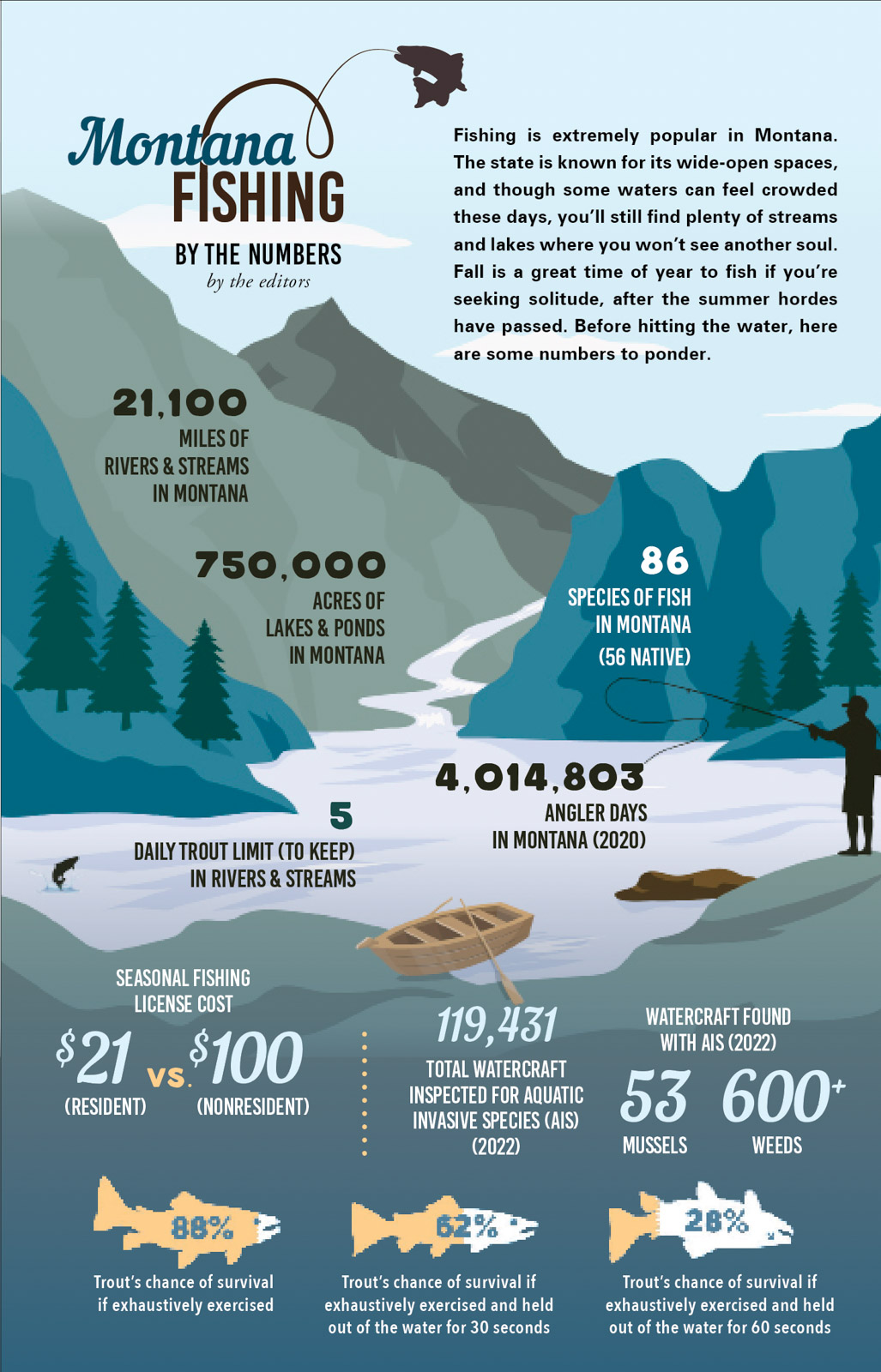Too Hot to Handle

by Everett Headley
Coldwater fisheries in Montana are experiencing an escalating conservation crisis. Warm-water species are appearing at alarming rates and in areas previously thought uninhabitable. These interlopers were first noticed over 20 years ago as anglers caught new species in reservoirs. Using otolith analysis—a means of comparing the chemical signatures of both fish and water bodies—biologists have attributed the appearance to “bucket biology,” a colloquialism for the transfer of live fish from one location to another. These illegal introductions are still a problem, as biologists work to restore fisheries; however, changing weather patterns are exacerbating what is already a Gordian knot.
Near the north entrance of Yellowstone Park in 2022, a 12-inch smallmouth bass was caught with a large streamer. The video posted on social media left no doubt—a warm-water species was now alive and well in the headwaters of a coldwater river. Once limited to the lower reaches of the Yellowstone, bass have made a gradual progression upstream, as water temperatures have increased. The result is a highly predatory fish preying on vulnerable natives.
This year, another smallmouth was caught in the Bitterroot River, nearly four miles upstream of the confluence with the Clark Fork. With other warm-water species such as largemouth bass and northern pike already present, this catch highlighted the severity of invasive expansion across the state.
Montana Fish, Wildlife & Parks (FWP) closely tracks and measures these changes. Eileen Ryce, FWP’s fisheries chief, knows well the disaster looming should warm-water species outcompete native coldwater trout. “We are focusing more on what we can do to make water the ideal temperatures at the most critical time of year,” she says. Increasing flows oxygenates waters and lowers their temperature. When done during spawning times, this gives native species the best opportunity at reproduction.
The question is whether this will be enough. Native trout species already compete with other introduced trout in their home ranges. New, warm-water species swimming upstream act as a two-pronged attack.
Anglers need to be vigilant as they enjoy Montana’s hallowed waters. Be careful when handling trout; don’t play them more than necessary, and keep them wet. When conditions are hard, minimize contact, or refrain from fishing altogether. And if you encounter something you don’t think belongs in the water, keep the specimen and bring it into an FWP office. As Ryce says, “Anglers are our strongest advocates and the best way for us to find out about new introductions.”
